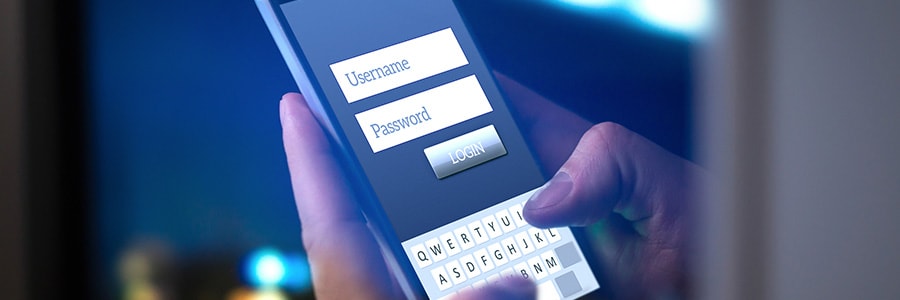When was the last time you changed your password? When you did, was security top of mind? If you’re like most people, probably not. Case in point: Take a look at the most commonly used passwords from 2017 from SplashData.
Here’s just the top 10.
- 123456
- password
- 12345678
- qwerty
- 12345
- 123456789
- letmein
- 1234567
- football
- iloveyou
There are a few things you can learn about these passwords. The first is, people like the convenience of swiping right across the top of the keyboard. The second is that people seem pretty set in their ways. According to SplashData, almost 10% of people have used at least one of the top 25 worst passwords in their lifetime.
We can agree that there is a general lack of creativity that goes into creating a password. We can also probably agree that this trend in poor password security is troubling. Weak passwords such as these are some of the worst because they expose the people using them to serious threats, such as data and identity theft.
Are you guilty? If so, it’s time to change your security ways. And even if your passwords are not as bad as the above, chances are you can improve their overall security.
What’s Considered a Strong Password?
Before you can create a secure password, you need to know what a strong password looks like. The best and most secure passwords that we’ve seen are those that include lowercase letters, capital letters, numbers, and a symbol. This isn’t convenient but it is much harder to guess and therefore, harder to hack.
Symbols tend to be the hardest thing to include. If that’s the case for you, and you still want to keep your password secure, try swapping out a letter for a similarly shaped symbol. For example, an exclamation point can easily replace the letter L or I. The ampersand can easily replace the letter S. Or, the number 4 can replace the word “for.”
Securing Your Next Password
Even if you create a strong password (unlike the top 10 passwords listed above), it’s a good idea to take extra measures to protect it further.
Opt for two-step verification. Two-step verification is a process where the program you’re logging into will text message a code to your cell phone, which you’ll have to input before you’re logged in. This means, even if a hacker has your password, they can’t get into your account because they’d have to have your phone too.
Create a different password for every service you use. This is a hard one to do because so many services require a password these days. But, the more you can differentiate your passwords, the better.
Store your password in a safe location. If you’re differentiating your passwords, you’ll want to store them somewhere safely so you don’t have to rely on your brain to remember them days, weeks, or even months down the road. Programs, such as LastPass or Dashlane are excellent for this.
Keep ‘em secret. It doesn’t matter how strong your password is if it’s in the wrong hands. Don’t send passwords by email and only enter your password into the websites where you’ve typed in the URL (not clicked on a link). The websites that request your password should be secure. Look for “HTTPS” ahead of the URL to know that you’re using a safe network.
What’s Your Password?
Passwords are one of the first and best lines of defense against hackers. Everyone on your network should have a secure password to protect your data. Share this article with your team as a friendly reminder of the importance of creating strong passwords.
Worried about how secure your network is? We’re here to help. Contact us for any of your IT security needs – password not required.

